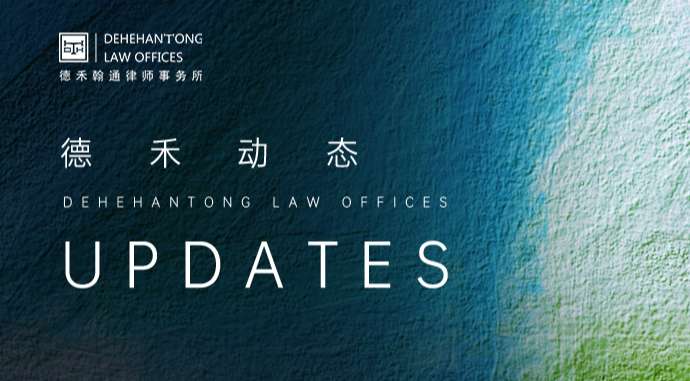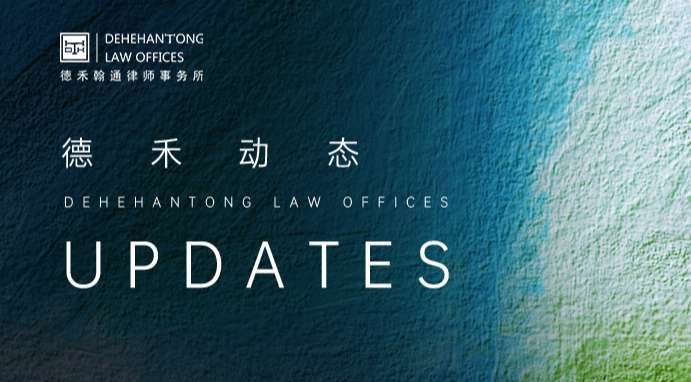《Construction Engineering Compliance Manual》——Quality Part (Part 1)
The quality of the project is very important in the construction project, and it is of great significance to ensure the safety, reliability and compliance of the design requirements of the project. Quality management plays a role in supervision, control and guarantee in construction projects, aiming to ensure that the quality of the project meets the requirements of national laws and regulations and relevant standards, and meets the needs and expectations of the owner and the public interest.
This article covers a number of key aspects in engineering construction, including construction drawings, technical disclosure, material testing, concealed engineering, decoration structure changes, acceptance, warranty and construction changes. These links have greater legal risks and important compliance requirements in the construction process of the project, and need to be strictly managed and controlled.
Construction drawings
1. Concept and compliance objectives
Construction drawings are an important basis in the construction process of construction projects, which contain the specific details and requirements of engineering design. Proper understanding and use of construction drawings is essential to ensure construction quality, compliance, and schedule control. Therefore, the design, standard specifications, and technical parameters of engineering drawings need to comply with the relevant regulations of construction projects to avoid quality problems and legal risks caused by non-compliance of drawings.
2. Common manifestations of legal risks
01. Drawings are missing or construction blueprints are not obtained;
02. Modification and change of construction drawings without approval or authorization;
03. There are design errors, omissions or non-compliance problems in the construction drawings;
04. There is a situation that the construction drawings are inconsistent with the actual construction.
3. Adverse consequences
The above legal risks may lead to construction quality problems, engineering safety hazards and construction delays, involving civil liability and administrative penalties. According to the relevant national regulations, violations of construction drawing compliance requirements will be punished, which may include fines, rework, repairs, and compensation for losses caused as a result. If a major safety accident constitutes a crime, the person directly responsible may be held criminally responsible.
Therefore, in order to ensure the compliance of construction drawings, enterprises should actively establish a sound drawing management system, strengthen internal review and supervision, and ensure the integrity and accuracy of drawings. This can effectively reduce potential legal risks and protect the reputation and economic interests of the enterprise.
4. Typical cases
On October 5, 2011, Company A and Company B signed the"Construction Contract for the Slope Protection of the Shear Wall of a Temple", and agreed that Company A would contract the construction of the slope protection project of the shear wall of a temple. After the contract is signed, Company A will enter the construction site and carry out the construction according to the white drawings provided by Company B.
On October 12, 2011, Company A proposed to Company B in the form of a work report that"the construction drawings provided when signing the contract are unreasonable, and any responsibility in the construction process shall be borne by Party A". On the 16th of the same month, the person in charge of the construction site of Company B, on behalf of Company B, annotated on the work report that"construction shall be carried out according to the drawings and shall be done according to the requirements of the contract".
Later, due to the dispute between the two parties over the non-payment of the project payment, Company A filed a lawsuit.
With regard to the responsibility for the rework of the shear wall due to quality problems, the court of first instance held that in accordance with the regulations and practices of the national construction industry, the construction contract of the construction project should be signed and organized under the premise of having blueprints. Company B's act of signing a contract with Company A based on the white drawings and requiring Company A to construct according to the white drawings without obtaining the construction blueprints was the main reason for the rework of the shear wall, so it should bear the main responsibility for the rework part. As a legal person with construction qualifications and capabilities, Company A signed a construction contract with Company B based on the white drawings and organized the construction in accordance with the requirements of Company B, which was also one of the reasons for the rework of the shear wall, so it should bear secondary liability for the rework part. [(2014) Luo Min Zhong Zi No. 2989]
5. Compliance advice
For missing drawings:
01. Establish a strict drawing management system to ensure the filing, filing and use of drawings;
02. Check the completeness and accuracy of the construction drawings, and supplement the missing drawings in a timely manner;
03. Follow the regulations and procedures of the construction administrative department to ensure the compliance of the drawings for the record.
For issues with unapproved drawing changes:
01. Establish a change management mechanism to ensure that all drawing changes are formally approved and recorded;
02. Strictly follow the contract and specification requirements to implement the drawing change procedures;
03. Carry out the necessary engineering quantity measurement and evaluation in the process of change, and update the relevant documents in a timely manner.
For the problem that the drawings do not match the actual construction:
01. Strengthen the comparative inspection of construction drawings and actual construction to ensure consistency and consistency;
02. In the construction process, find and correct the problem that the drawings are inconsistent with the actual construction;
03. Cooperate with the construction administrative department or the entrusted supervision unit to carry out the necessary drawing review and acceptance.
For design errors, omissions, or non-compliance in construction drawings:
01. Conduct comprehensive design review and verification before the preparation of construction drawings to ensure the accuracy, compliance and consistency of the design;
02. Follow the applicable architectural design codes, industry standards and relevant regulatory requirements to ensure that the construction drawings meet the specified standards;
03. Strengthen communication and coordination between the design team, the construction team and the owner, jointly clarify the design intent, and find and solve potential problems in advance.
The technical disclosure
1. Concept and compliance objectives
Technical disclosure is an important part of the construction process of construction projects, through which the construction party can accurately understand and master the design requirements, process requirements and safety requirements, and ensure the compliance and quality of construction.
According to the regulations of the Ministry of Housing and Urban-Rural Development, the content and requirements of the disclosure work should be clarified to the relevant participants before construction, so as to ensure that the participants have a clear understanding of the construction technical requirements and operating procedures of the project. When making technical disclosures, it should be ensured that the following information is clearly conveyed to construction managers and operators before construction: construction working conditions, specific construction methods, necessary technical measures, quality standards, and safety and environmental protection measures. Relevant records are also required to be kept to reduce quality issues and legal disputes caused by improper technical operations.
2. Common manifestations of legal risks
01. The technical disclosure is inaccurate or incomplete;
02. The content of the technical disclosure is not clearly conveyed;
03. The technical disclosure record is incomplete.
3. Adverse consequences
According to the relevant construction project quality management regulations, the law provides a series of penalties and accountability measures for the construction unit in the construction of non-compliance with engineering design and technical standards and other violations. The main purpose of these regulations is to ensure that the quality of construction meets the prescribed standards in order to maintain the quality and safety of the works. Failure to comply with these regulations may lead to engineering quality problems, engineering safety risks, and legal liability. Therefore, it is recommended that all parties must comply with regulatory requirements to ensure the compliance and quality of construction and avoid adverse consequences.
4. Compliance advice
01. Ensure the accuracy and completeness of the technical disclosure content, and the informant should introduce and clarify the design requirements, process requirements and safety requirements in detail to ensure that the construction party fully understands;
02. Adopt appropriate forms of disclosure, such as meetings, training, etc., and form written documents for the above records to ensure the clarity and effectiveness of information transmission;
03. Do a good job of recording and archiving the technical disclosure, including the content, time, and participants of the disclosure, so as to facilitate subsequent traceability and verification;
04. Supervise and inspect the construction party's understanding and implementation of technical requirements, and promptly discover and correct the problems that are not in place.
Material testing
1. Concept and compliance objectives
Material testing is a critical part of construction and is critical to ensuring project quality and compliance. Therefore, the necessary testing and evaluation of the materials used should be carried out to ensure that the quality of the materials meets the standards and requirements, so as to prevent engineering quality defects and legal risks caused by material quality problems.
According to the relevant specifications of the Ministry of Housing and Urban-Rural Development, the materials, products and equipment in the construction project should be inspected and accepted as required, especially those important materials and products related to safety, energy saving, environmental protection and main functions, which should be re-inspected in accordance with the relevant provisions of each specialty, and at the same time need to be inspected and approved by the supervision engineer.
In addition, witness inspection should be carried out in accordance with the regulations for test blocks, test pieces and materials involving structural safety, energy saving, environmental protection and main use functions. This inspection procedure should be carried out under the supervision of the construction unit or supervision unit, including on-site sampling and inspection to ensure the authenticity and representativeness of the test samples.
For imported products, they need to meet the quality requirements stipulated in the contract and be accompanied by Chinese instructions and commodity inspection certificates. Only after entering the site and passing the inspection, can it be used in the project.
In addition, at the construction site, appropriate storage and protective measures must be taken for materials, semi-finished products, structural parts, appliances and equipment during transportation and storage to ensure that their quality and performance are not compromised.
2. Common manifestations of legal risks
01. Using counterfeit and shoddy materials or providing false test reports;
02. Failure to carry out material testing in accordance with the prescribed procedures;
03. The test results are inconsistent with the actual material quality;
04. Failure to repair or replace unqualified materials in a timely manner.
3. Adverse consequences
Resulting in project quality problems, there are related risks such as violations of laws and regulations such as the Product Quality Law of the People's Republic of China, the Regulations on the Quality Management of Construction Projects, and the Intellectual Property Law of the People's Republic of China, resulting in civil liability and administrative penalties; where the circumstances are serious and constitute a crime, criminal responsibility is pursued in accordance with law.
According to the relevant laws and regulations, if the construction unit fails to inspect the building materials, building accessories, equipment and commercial concrete, or fails to take samples and test the test blocks, test pieces and related materials related to structural safety, it will face administrative liability. According to the regulations, such violations will be ordered to correct and imposed a fine of 100,000 yuan to 200,000 yuan, and in serious cases, they may also face penalties such as suspension of business for rectification, reduction of qualification level or revocation of qualification certificates. If these violations result in damages, they will be liable for compensation in accordance with the law.
In addition, according to the regulations, if the construction unit, the design unit, the construction unit, and the project supervision unit violate the provisions of laws and regulations, resulting in the lowering of the project quality standards and constituting a major safety accident, the directly responsible personnel may be investigated for criminal responsibility.
4. Compliance advice
01. Choose reputable, qualified and powerful material suppliers;
02. Conduct regular material testing and ensure that the testing institution has legal qualifications and accreditation;
03. Establish material acceptance records and files, including supplier information and test reports;
04. Implement material testing procedures in strict accordance with laws, regulations and standards;
05. Deal with and replace unqualified materials in a timely manner to avoid using unqualified materials.
Concealed engineering
1. Common concealed projects
Concealed works are those parts of a building, structure, or equipment that are not easily directly observed or inspected, and are usually hidden, enclosed, or buried during construction. Common concealed works include:
Electrical concealment engineering: including the installation and wiring of wires, cables, electrical equipment, etc., as well as works related to power supply and distribution.
HVAC concealed engineering: covering the installation and connection of pipes, air ducts, valves, heat exchangers, cooling towers, etc. of heating, ventilation and air conditioning systems.
Water supply and drainage concealment engineering: including the installation, connection and layout of water supply pipelines, drainage pipelines, sewage treatment equipment, fire-fighting equipment, etc.
Gas concealment engineering: involves the installation and connection of gas supply pipelines, gas meters, gas water heaters, gas cookers, etc.
Communication concealment engineering: including the wiring and connection of telephone lines, network cables, television cables, security monitoring lines, etc., as well as the installation of related equipment.
Weak current concealment engineering: refers to the installation and connection of low-voltage systems, such as smart homes, building automation, data networks, etc.
2. Concept and compliance objectives
According to the relevant specifications of the Ministry of Housing and Urban-Rural Development, before carrying out the concealed project, the construction unit shall notify the supervision unit for acceptance. This process requires the on-site video data to be left to form the acceptance document. Only after successfully passing the acceptance and passing the inspection, the construction can be continued.
When carrying out concealed works, construction crews often need to ensure the quality, compliance, and safety of the work. This includes the proper installation, connection and insulation of pipes, cables, equipment, etc., as well as the necessary testing, inspection and acceptance work.
In addition, care should be taken to record the location, layout and related details of the concealed works during the construction process for future maintenance and restoration work. Necessary supervision and acceptance should be carried out for concealed works to ensure that the construction of concealed parts meets the specifications and design requirements, so as to avoid potential risks and disputes caused by construction quality problems.
3. Common manifestations of legal risks
01. Failure to carry out concealed engineering acceptance in accordance with regulations;
02. Concealed engineering quality problems are not discovered and rectified in a timely manner;
03. Concealed engineering changes are not approved;
04. The construction record of the concealed project is incomplete or tampered with.
4. Adverse consequences
It may lead to the difficulty of discovering and correcting project quality problems, leading to civil liability and administrative penalties; where the circumstances are serious and constitute a crime, criminal responsibility is pursued in accordance with law. (See Criminal Compliance section)
5. Compliance advice
In order to reduce the legal risks of concealed works, the following measures are recommended:
1. Strictly implement relevant norms and standards to ensure that concealed projects meet the requirements.
2. Carry out the necessary acceptance of concealed works, and record the acceptance process and results.
(It must be made clear here that, from the perspective of both the employer and the contractor, concealed projects should be prevented from occurring, and acceptance should be carried out in a timely manner after the construction of concealed projects is completed.) If there is any objection to the quality problem during acceptance, it should be dealt with in time. In addition, combined with the characteristics of the long construction time of the construction project, if the construction unit or supervision unit is changed during the construction process, the relevant issues should be dealt with before the handover and confirmed through written documents, if no agreement can be reached, if necessary, notarization can also be carried out. Otherwise, there may be circumstances that cannot be identified at the time of litigation. )
3. Conduct regular internal inspections and evaluations to ensure the authenticity and completeness of the construction records of concealed projects.
The decoration structure changes
1. Concept and compliance objectives
Decoration structure change refers to the act of changing or adjusting the original structure in the process of construction project decoration. This includes changing walls, removing or adding partitions, adjusting the layout of the space, and more.
According to the relevant specifications of the Ministry of Housing and Urban-Rural Development, the design of decoration and decoration projects should follow the following provisions: if the design of decoration and decoration projects of existing buildings involves changes in the main structure and load-bearing structure, it is necessary to entrust the original structural design unit or the design unit with the corresponding qualification level to propose a design plan before construction. Alternatively, the safety of the building structure can be assessed by the appraisal unit, and the design scheme can be determined based on the assessment results.
The compliance and standardization of renovation structural changes are essential to ensure the quality and safety of the project. When changing the decoration structure, it is necessary to comply with the relevant laws, regulations and technical requirements, carry out the necessary design, acceptance and recording, and ensure that the changed structure meets the safety and stability requirements, so as to reduce the quality problems and legal risks caused by the structural change.
2. Common manifestations of legal risks
1. Unauthorized changes to the decoration structure;
2. The changed structure does not meet the safety requirements or design specifications;
3. Failure to apply for and approve the necessary structural changes.
3. Adverse consequences
According to the relevant laws and regulations, if there is no suitable design plan for unauthorized construction in the decoration project involving the change of the main body of the building or the load-bearing structure, it will face the penalty of ordering correction, and the fine amount is between 500,000 yuan and 1 million yuan. For the construction user in the renovation process without permission to change the main body of the building and load-bearing structure, will also be ordered to correct, and face a fine of 50,000 yuan to 100,000 yuan. If the above-mentioned acts lead to losses, they also need to bear civil liability for compensation. Among them, where the circumstances are serious and constitute a crime, criminal responsibility is to be pursued in accordance with law. (See Criminal Compliance section)
4. Compliance advice
1. Clarify the provisions and responsibilities for changes in the decoration structure in the contract, including the scope, procedures, and costs of the change;
2. Strictly abide by the architectural design drawings and related specifications to ensure that the changes in the decoration structure meet the design requirements;
3. Evaluate and analyze before the change, determine the impact of the change on the original structure, and take corresponding reinforcement measures;
4. Carry out the acceptance of the change of the decoration structure, ensure that the change meets the requirements and record the relevant acceptance results;
5. Establish a sound change management mechanism, including the change application and approval process, to ensure that the change goes through the compliance process;
6. Strengthen supervision and supervision, and correct and deal with unapproved or non-compliant changes in decoration structures.
Recommended Information
-
HonorsDehehantong was successfully selected as WUPO2024 TOP100 Excellent Service Organization2024-12-31
-
HonorsCongratulations to Dehehantong ten lawyers passed the intermediate title evaluation2024-12-18
-
Articles《Construction Engineering Compliance Manual》——Safety Production (Part 2)2024-12-17
-
ArticlesCharacter Interview | Seriousness is my attitude, to stay professional and explore infinite possibilities - lawyer Mao Yuying2024-12-16
-
Case StudiesDehehantong helped state-owned financial asset management companies to successfully acquire non-performing asset projects of banks2024-12-16















